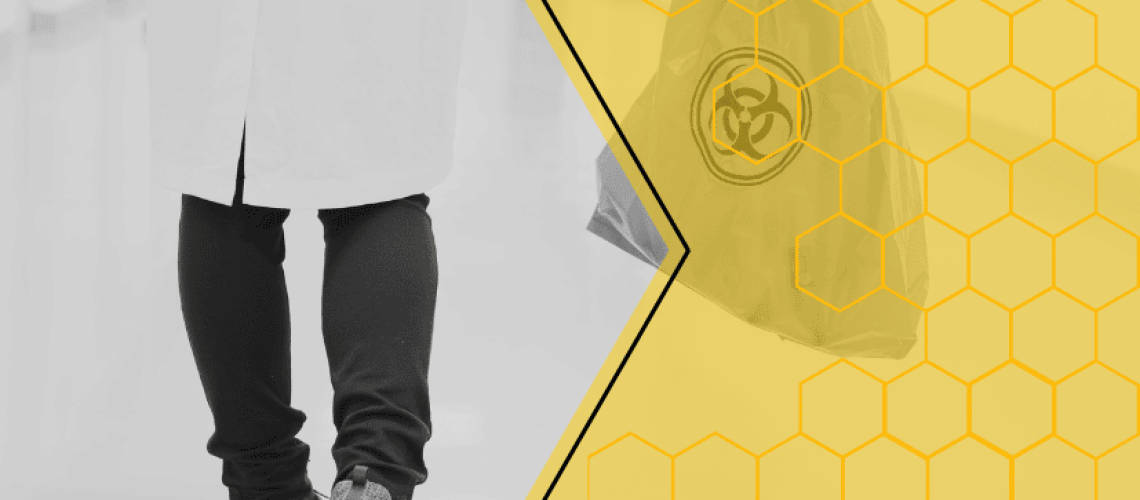Clinical Waste Management
Clinical waste includes animal waste, human tissue waste, sharps and laboratory waste and has the potential to cause disease if not properly disposed of. Clinical waste management relates to establishing a process for the safe disposal of this waste stream, including blood, pharmaceutical substances, devices contaminated with blood or body fluids, sharps or other potentially infectious substances.
Under legislation in all States and Territories of Australia, the responsibility for correct waste disposal rests with the waste generator. It is their obligation to ensure that all wastes are clearly identified and managed (treated and disposed of), in accordance with the legislation applicable to the State in which they reside. Apart from environmental issues, correct waste management is also a Workplace Health & Safety issue that needs to be effectively managed.
Cost and Environmental Benefits of Correct Waste Management
Ensuring wastes are correctly disposed of, has important cost benefits and ensures that the principles of sustainability are also considered. The most important first action is to ensure all wastes are correctly segregated at the source and this means that staff are trained and fully aware of their responsibility, follow instructions on the dedicated colour coded waste bins, and that there is ongoing monitoring of the system.
For example, if staff were to place general waste into the clinical waste stream, this will result in higher management costs as the waste management provider has to separate the cross-contaminated waste streams before treatment and disposal. Conversely, placing clinical waste into the general waste stream is a health hazard and could result in action by regulators for breaching your responsibilities.
The first step in efficient waste management is to ensure all stakeholders understand clinical waste classifications and what is allowed to be deposited into general waste or even recycling streams. Med-X provide staff training in this regard at onboarding or as required by our clients.
Under environmental requirements, wastes such as nappies, Personal Protective Equipment (e.g. masks, gloves and gowns) unless blood stained, are not considered clinical waste and can be deposited into the general waste unless they have been classified as clinical waste by an infection control practitioner. Sanitary waste is also not classified as clinical waste.
So where to start:
- Understand your legal responsibilities for both environmental and WH&S aspects of waste management.
- Ensure that all contractors such as collection companies are appropriately insured, only use vehicles that are permitted for this waste type and assist you in meeting all administrative aspects such as with Transport Certificates.
- Review all waste containers within the facility to ensure that they assist in correct waste segregation and contain the types of materials deposited into them.
- Conduct regular training sessions with all staff.
- Monitor your waste systems on a regular basis and provide reports to staff on performance.
Practical Implementation Policies:
The following measures should be used to assist in meeting your legal obligations and to minimise the risk of workers being exposed to blood or other potentially infectious substances:
- Develop a safe system of work for the handling, storage and transport and disposal of clinical waste.
- Have a clear policy for the identification of all clinical wastes and a training program for all staff in correct management techniques.
- Ensure clinical waste is disposed of as soon as possible in a securely sealed, labelled and leak-proof container (e.g. closable and puncture resistant).
- During use, containers for sharps should be easily accessible to workers (but ensuring members of the community cannot access contents) and located as close as possible to the area where sharps are used or likely to be found, kept upright throughout use, and replaced routinely and only filled to the designated “fill line”.
- Ensure clinical waste storage areas are inaccessible to unauthorised persons and are maintained in a clean and hygienic condition.
- Ensure that when moving containers of contaminated sharps from the area of use, the containers should be closed immediately prior to removal or replacement to prevent spillage or protrusion of contents during handling, storage, transport, or shipping and placed in a secondary container.
- Regularly review all measures to ensure they are effective.
Note that it is important that all generators of clinical waste understand and implement requirements for the management of these wastes based on individual State/Territory Regulations, Policies and management guidelines. Contact the experienced team at Med-X to assist you in developing a customised waste management solution on 1300 116 339 or mail contact@med-xsolutions.com.au

